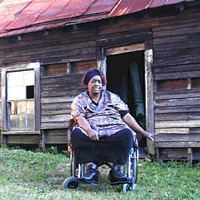Country United States County Forsyth FIPS code 37-05340 Elevation 259 m Population 339 (2013) Area code 336 | Time zone Eastern (EST) (UTC-5) GNIS feature ID 1006108 Zip code 27010 Local time Sunday 5:39 PM | |
 | ||
Weather 12°C, Wind SE at 6 km/h, 26% Humidity Area 179 ha (179 ha Land / 1 ha Water) | ||
Bethania is the oldest municipality in Forsyth County, North Carolina, United States, and was most recently incorporated in 1995, upon the reactivation of the original 1838/1839 town charter. In 2009, Bethania celebrated the 250th anniversary of its establishment in 1759. As of the 2010 census, the town population was 328.
Contents
Map of Bethania, NC, USA
History
The first planned Moravian settlement in North Carolina, Bethania exists as the only remaining independent, continuously active Moravian village in the southern United States, and is the only known existing Germanic-type linear agricultural village in the South. The 500-acre (2.0 km2) Bethania National Historic Landmark district is the largest such district in Forsyth County. Bethania and its 18th- and 19th-century properties are listed on the National Register of Historic Places.
Bethania was founded 12 June 1759 by the Moravian Brethren of Wachovia as a congregational, agricultural, and trades community. Bethania was the first planned Moravian settlement in Wachovia, and members of a "Society", under the care of the Bethania congregation, were permitted to reside in the village after July 1759. Today, Bethania's eighteenth-century German-type linear agricultural village design remains visible and intact, and most town lots and roadways have remained in continuous use since 1759. The name "Bethania" is the German form of "Bethany", the name of a village near Jerusalem recorded in the New Testament as the home of Mary, Martha and Lazarus, as well as that of Simon the Leper.
In March 2007, the town of Bethania opened a visitor center and museum, Historic Bethania, to welcome friends and guests, and to promote education and cultural resource preservation in the community. The center's facilities include a relocated and restored Moravian farmstead home, the Wolff-Moser House, dating to ca. 1792, one of the earliest known surviving rural Moravian farmstead homes in North America. The Wolff-Moser House can be visited by the public during the center's open hours. The visitor center, located at 5393 Ham Horton Lane, at the intersection of Main Street and Bethania Road, also serves as an orientation center for those wishing to explore the Bethania National Historic Landmark District. Visitors to the c. 1759 Bethania Historic District can obtain a tour map and additional information at the visitor center.
In addition to the Bethania Historic District, the Dr. Beverly Jones House, John Henry Kapp Farm, and Samuel B. Stauber Farm are listed on the National Register of Historic Places.
Bethania Mill and Village Shoppes, the only shopping center within the city limits, opened October 18, 2008, at the site of an old seed mill. The center contains a general store and plans to have a restaurant. They currently are renting out office space.
Geography
Bethania is located in northwestern Forsyth County at 36°11′4″N 80°20′5″W (36.184418, -80.334786). It is surrounded by the city limits of Winston-Salem and is 10 miles (16 km) northwest of the city center.
According to the United States Census Bureau, the town has a total area of 0.69 square miles (1.8 km2), of which 0.004 square miles (0.01 km2), or 0.80%, is water.
Demographics
As of the census of 2000, there were 354 people, 139 households, and 111 families residing in the town. The population density was 490.0 people per square mile (189.8/km²). There were 148 housing units at an average density of 204.8 per square mile (79.4/km²). The racial makeup of the town was 81.92% White, 15.82% African American, 0.28% Asian, and 1.98% from two or more races. Hispanic or Latino of any race were 2.54% of the population.
There were 139 households out of which 32.4% had children under the age of 18 living with them, 69.8% were married couples living together, 8.6% had a female householder with no husband present, and 20.1% were non-families. 15.8% of all households were made up of individuals and 5.0% had someone living alone who was 65 years of age or older. The average household size was 2.55 and the average family size was 2.84.
In the town, the population was spread out with 23.4% under the age of 18, 3.4% from 18 to 24, 29.4% from 25 to 44, 29.9% from 45 to 64, and 13.8% who were 65 years of age or older. The median age was 42 years. For every 100 females there were 91.4 males. For every 100 females age 18 and over, there were 96.4 males.
The median income for a household in the town was $51,875, and the median income for a family was $55,357. Males had a median income of $45,500 versus $27,813 for females. The per capita income for the town was $25,702. About 7.3% of families and 8.3% of the population were below the poverty line, including 13.7% of those under age 18 and 9.3% of those age 65 or over.
